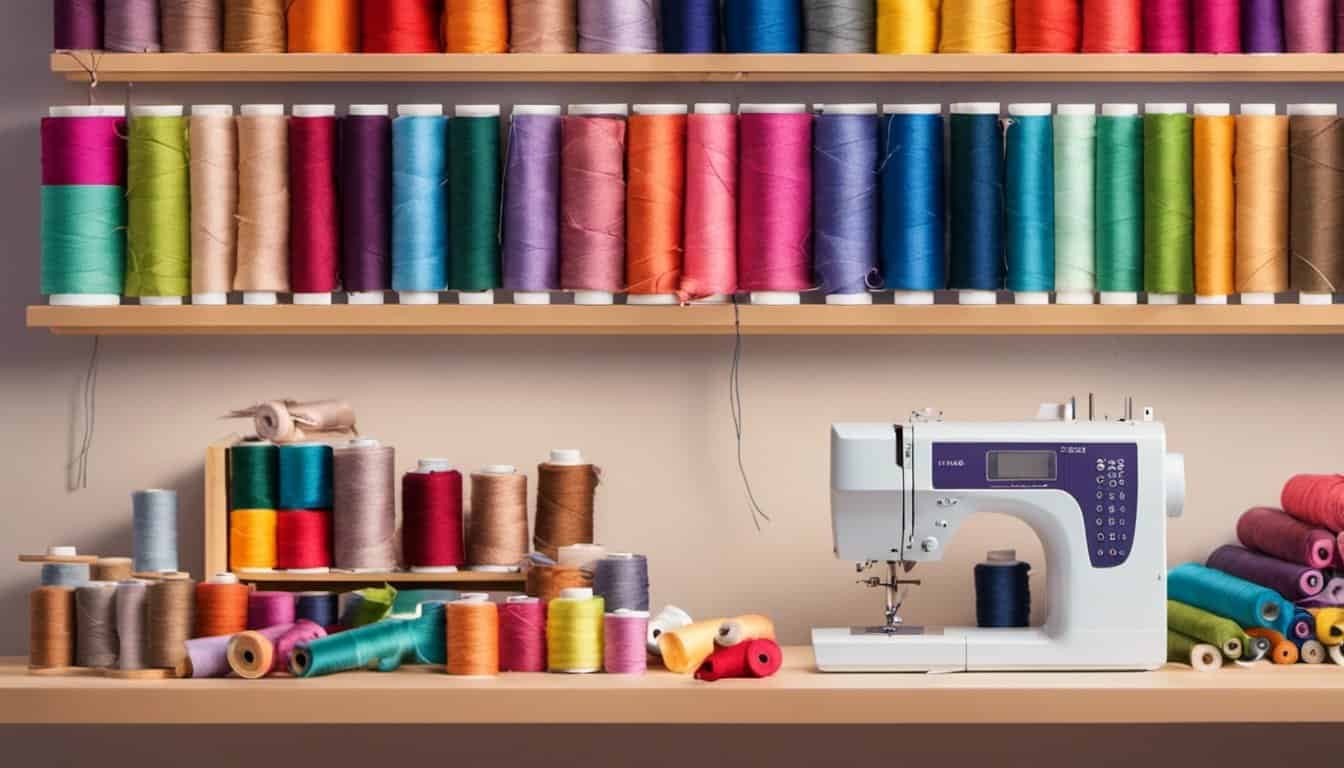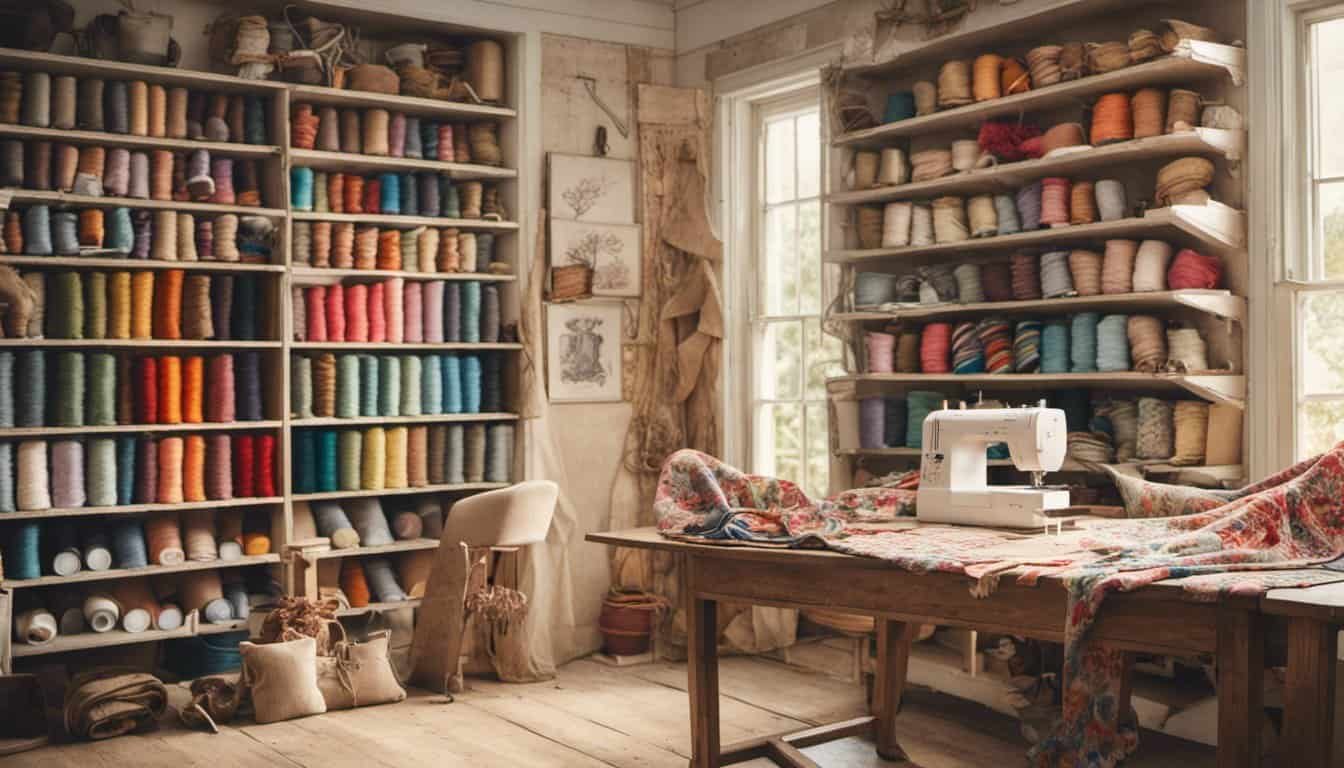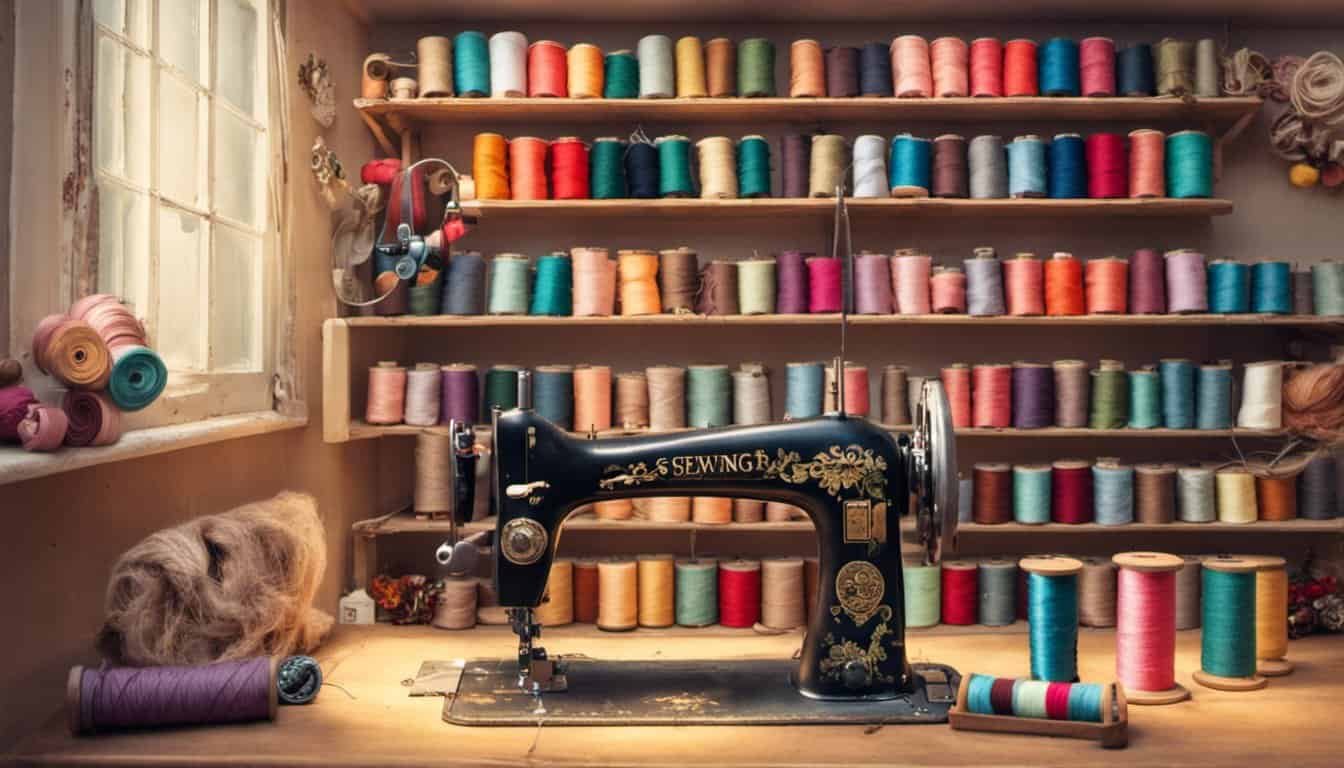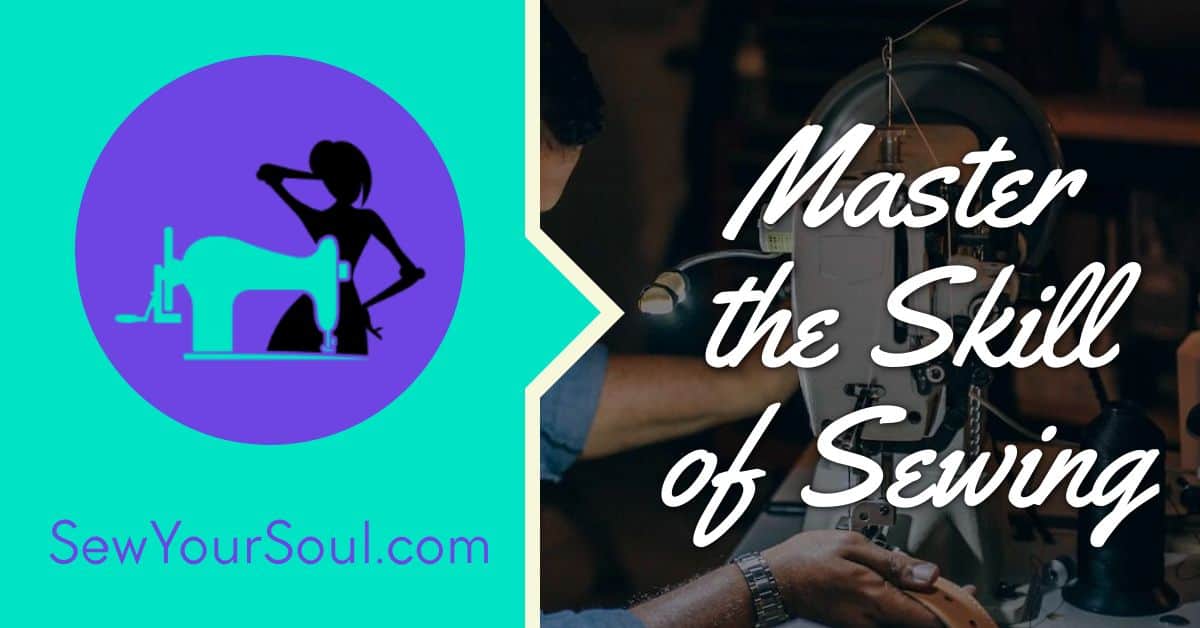Welcome to the world of sewing! If you’re new to the craft or just looking to upgrade your sewing skills, using a Singer sewing machine is a great place to start. With its reputation for quality and reliability, Singer has been a trusted brand for generations. In this article, we’ll guide you through the basics of using a Singer sewing machine, from setting it up to mastering essential techniques. Whether you’re eager to create your own stylish garments or tackle fun DIY projects, you’ll find everything you need to know right here.
Are you ready to unleash your creativity? Learning how to use a Singer sewing machine is easier than you might think. In this article, we’ll walk you through step-by-step instructions on how to set up your machine, thread the needle, and wind the bobbin. We’ll also cover essential sewing techniques, such as adjusting stitch length and width, using different presser feet, and troubleshooting common issues. No matter your skill level, we’re here to help you get the most out of your Singer sewing machine.
Understanding the Different Parts of a Singer Sewing Machine
When it comes to using a Singer sewing machine, it’s essential to have a good understanding of its different parts. This knowledge will not only help you set up the machine correctly but also enable you to troubleshoot any issues that may arise during your sewing projects. So, let’s explore the various components of a Singer sewing machine and their functions.
- The Bobbin Case: The bobbin case is responsible for holding the bobbin, which is the thread spool that sits under the needle plate. It’s important to ensure that the bobbin is threaded correctly and placed securely in the bobbin case for smooth stitching.
- The Feed Dog: Located under the needle plate, the feed dogs are small, tooth-like metal pieces that move the fabric forward as you stitch. They play a crucial role in controlling the fabric’s movement, ensuring even stitches and preventing puckering.
- The Presser Foot: The presser foot is the metal attachment that holds the fabric in place as you sew. Singer sewing machines often come with interchangeable presser feet that serve different purposes, such as zippers, buttonholes, or quilting.
- The Needle and Needle Clamp: The needle and needle clamp are vital components that hold the needle in place. It’s important to use the correct needle size and type for your desired fabric and project to ensure clean, precise stitches.
- The Thread Tension Dial: The thread tension dial allows you to adjust the tightness of the upper thread. Proper tension ensures balanced stitches without the thread puckering or breaking. Experiment with different settings until you achieve the desired stitch quality.
- The Stitch Length and Width Controls: These controls determine the length and width of your stitches. Adjusting the stitch length is useful for creating longer or shorter stitches, while changing the stitch width can help you create decorative or zigzag stitches.
Setting up your Singer sewing machine
When it comes to starting a new sewing project, the first step is setting up your Singer sewing machine. Don’t worry, it’s a straightforward process that won’t take up much of your time! Here’s what you need to do:
- Find a suitable workspace: Look for a well-lit area with a sturdy table or desk. Make sure you have enough space to maneuver your fabric and sewing machine comfortably.
- Gather your materials: Before you begin, gather all the necessary materials. This includes your Singer sewing machine, power cord, foot pedal, thread, needles, and fabric.
- Place the machine: Position your sewing machine on the table, ensuring that it is stable and secure. Plug in the power cord and connect the foot pedal.
- Prepare the bobbin: Locate the bobbin winding mechanism on your machine. Take an empty bobbin and insert it onto the bobbin spindle. Follow the threading path indicated by the arrow on your machine, bringing the thread to the bobbin winding tension disk. Hold the thread and start winding the bobbin by pressing the foot pedal. Once the bobbin is full, cut the thread and remove it from the spindle.
- Insert the bobbin: Open the bobbin case and insert the wound bobbin, making sure it rotates in the correct direction. Follow the instructions in your machine’s manual to properly thread the bobbin through the tension spring.
- Thread the machine: Now it’s time to thread the needle. Follow the threading path indicated on your machine, making sure the thread passes through all the necessary guides and tension disks. Be sure to raise the needle to its highest position before threading to ensure proper tension.
- Test the stitches: Once you’ve threaded the machine, test the stitches on a scrap piece of fabric. Check the tension and adjust it if necessary. Experiment with different stitch lengths and widths to familiarize yourself with the settings.
By following these steps, you’ll have your Singer sewing machine set up and ready to go in no time. Now you can move on to the fun part – starting your sewing project! Remember, practice makes perfect, so embrace the learning process and enjoy the journey of creating beautiful things with your Singer sewing machine.
Threading the Bobbin
Threading the bobbin is a crucial step in using your Singer sewing machine effectively. This section will guide you through the process of correctly threading the bobbin, ensuring smooth and hassle-free sewing. Let’s get started!
- Prepare the bobbin: Begin by selecting a suitable thread for your project. Make sure the thread matches the fabric you’ll be sewing. Next, place the thread spool on the spool pin, usually located on the top of the sewing machine. Then, wind the thread around the bobbin a few times by hand to secure it.
- Insert the bobbin: Take the wound bobbin and locate the bobbin case, which is typically found in the lower part of the sewing machine. Open the bobbin case and insert the bobbin, making sure the thread is pulled through the slot in the case.
- Thread the bobbin: Now, hold the loose end of the thread with your non-dominant hand. With your dominant hand, turn the handwheel towards you to lower the needle into the bobbin case. Then, pull the thread towards the back of the machine, passing it through the slit in the bobbin case.
- Retrieve the bobbin thread: Gently pull on the thread until you feel a slight tension. Continue pulling until the bobbin thread comes out through the slit in the bobbin case and forms a loop. Hold onto this bobbin thread, keeping it out of the way.
- Secure the bobbin thread: Raise the needle to its highest position by turning the handwheel towards you. Now, gently pull the top thread with your other hand, causing the bobbin thread to come up through the needle plate. Pull both threads to the back of the machine, ensuring they are kept taut.
Congratulations! You have successfully threaded the bobbin of your Singer sewing machine. This vital step ensures that both the top and bobbin threads work together seamlessly while sewing. Remember to always check the tension and make adjustments as needed for optimal stitch quality.
Next, we will delve into adjusting the stitch length and width to further enhance your sewing experience with your Singer sewing machine. So, let’s move on to the next section without further ado.
Threading the Needle
Threading the needle is an essential step in using your Singer sewing machine effectively. Proper threading ensures smooth and hassle-free sewing. Don’t worry, it’s easier than it looks! Follow these simple steps to thread your needle like a pro:
- Raise the presser foot: Before threading the needle, make sure to raise the presser foot. This relieves the tension on the thread and allows for easier threading.
- Cut a clean edge: Trim the end of your thread so that it has a clean and straight edge. This will help you thread the needle smoothly without any fraying or tangling.
- Thread the needle: Hold the end of the thread firmly with one hand and use your other hand to guide the thread through the eye of the needle. If you find it challenging to thread the needle, you can use a needle threader. Simply insert the threader through the needle eye, then thread the threader itself, and finally pull the thread through the eye of the needle.
- Leave a tail: After threading the needle, leave a tail of about 4-6 inches. This tail will prevent the thread from slipping out while you start sewing.
Remember, it’s always a good idea to practice threading the needle a few times to get comfortable with the process. Once you’ve mastered this skill, you’ll be amazed at how much smoother your sewing experience becomes.
Troubleshooting Tips
Sometimes, threading the needle can be frustrating, especially when the thread keeps breaking or the needle won’t pick up the bobbin thread. Here are a few troubleshooting tips you can try:
- Check the thread tension: Ensure that your thread tension isn’t too tight or too loose. Adjust the tension dial accordingly to ensure optimal performance.
- Clean the needle area: Dust and lint can accumulate around the needle area, causing issues with threading. Use a small brush or a cotton swab to clean the area thoroughly.
- Use the correct needle: Make sure you are using the correct type and size of needle for your fabric. Using the wrong needle can lead to thread breakage and other sewing problems.
Adjusting the Tension
Adjusting the tension on your Singer sewing machine is an important aspect of achieving high-quality stitches and ensuring that your fabric doesn’t bunch up or become too loose. Finding the right tension can make a significant difference in the overall appearance and durability of your sewing projects.
Here are some steps to help you adjust the tension on your Singer sewing machine:
- Start by locating the tension dial, which is usually located on the front or side of the machine. It is typically marked with numbers or a range of tension settings.
- Set the tension dial to the default setting, usually around the midpoint. This is a good starting point for most fabrics and stitch types.
- Take a scrap piece of fabric and create a sample stitch. Examine the top and bottom threads to check for any tension issues. If the top thread is pulling the bottom thread too tightly, the tension is too high. If the bottom thread is showing on the top side of the fabric, the tension is too loose.
- To decrease the tension, turn the tension dial to a lower number. To increase the tension, turn the dial to a higher number. Make small adjustments at a time and create another sample stitch to check the results.
- Continue adjusting the tension incrementally until you achieve balanced stitches, where both the top and bottom threads meet in the middle of the fabric.
Remember, different fabrics and stitch types may require slight adjustments in tension. It’s essential to test on a scrap fabric before starting your project to avoid any issues down the line. Additionally, always refer to your Singer sewing machine’s manual for specific instructions on adjusting tension and recommendations for different fabric types.

Selecting and Changing the Stitch Length
Now that you’re comfortable with threading the bobbin and adjusting the tension on your Singer sewing machine, let’s dive into another important aspect of sewing – selecting and changing the stitch length. This will allow you to create different effects and achieve the perfect stitch for your project.
1. Understanding Stitch Length
Stitch length refers to the distance between each stitch. This setting determines how close or far apart your stitches will be. For most sewing projects, a standard stitch length of 2.5 mm works well. However, some fabrics may require shorter or longer stitches, depending on their texture and weight.
2. Selecting the Stitch Length
To select the stitch length on your Singer sewing machine, look for the stitch length control dial. It’s usually located on the front or along the side of the machine. Turn the dial to the desired stitch length value. Remember, smaller values mean shorter stitches, while larger values indicate longer stitches.
« Unlock the Secrets to Perfect Sewing: Learn How to Prevent Sewing Machine Nightmares
Discover the Secret to Perfect Sewing: Unveiling the Foolproof Techniques for Determining the Right Tension on Your Sewing Machine »
3. Changing the Stitch Length
If you want to change the stitch length during sewing, pause your machine and select the new value on the stitch length control dial before you resume stitching. Remember to test the new stitch length on a scrap piece of fabric to ensure it’s suitable for your project.
4. Experimenting with Stitch Length
Don’t be afraid to experiment with different stitch lengths to achieve various effects. For example, longer stitches create a bolder and more visible stitch, which can be great for decorative stitching or topstitching. On the other hand, shorter stitches are perfect for delicate fabrics or securing seams.
5. Sewing Machine Manual

Always refer to your Singer sewing machine’s manual for specific instructions on selecting and changing the stitch length. Different models may have slight variations in their control dials or additional features.
Remember, finding the right stitch length may require a bit of trial and error. Take the time to practice on scrap fabric before sewing on your actual project. By understanding how to select and change the stitch length, you’ll have greater control over the quality and appearance of your stitches.
Continue reading to explore more essential techniques and tips for using your Singer sewing machine proficiently.
Choosing the Right Needle and Thread
When it comes to sewing, choosing the right needle and thread is crucial for achieving professional-looking results. Here are some tips to help you make the best choices for your sewing projects:
1. Needle Selection
The needle you use can greatly impact the overall quality of your stitches. Different fabrics require different needle types and sizes. Here are some common needle types and their recommended uses:

- Universal Needle: This needle is great for general sewing projects and can be used with a variety of fabric types. It has a slightly rounded point that is suitable for woven and knit fabrics.
- Ballpoint Needle: If you are working with stretchy or knit fabrics, a ballpoint needle is your best bet. Its rounded tip helps prevent the needle from piercing and breaking the fabric fibers, resulting in smooth and even stitches.
- Sharps Needle: If you’re working with tightly woven fabrics such as quilting cotton or silk, a sharps needle with its slim, sharp point is ideal. It creates precise stitches without damaging the fabric.
Remember to choose the appropriate needle size based on the thickness of your fabric. The higher the number, the thicker the needle. For instance, a size 12 needle is suitable for lightweight fabrics, while a size 16 needle is better for heavyweight materials.
2. Thread Selection
Selecting the right thread is just as important as choosing the right needle. Here are some factors to consider when selecting thread for your sewing projects:
- Thread Weight: Threads are labeled with a weight number. A higher weight number indicates a finer thread. For most basic sewing projects, a 40-weight thread will work well. However, for heavier fabrics or topstitching, you may want to use a thicker thread to ensure durability and visibility.
- Fiber Content: Threads come in a variety of fibers such as cotton, polyester, nylon, and silk. Each fiber has its own characteristics, so choose one that complements your fabric. For example, silk thread is perfect for delicate fabrics, while polyester thread is great for stronger and stretchier materials.
- Matching Colors: It’s important to choose a thread color that matches or complements your fabric. A well-matched thread will blend seamlessly with your stitches, while a contrasting color can create decorative effects.
Remember to stock up on different thread colors to ensure you always have the right match for your projects.
By carefully considering the needle and thread you use, you can ensure a smooth sewing experience
Learning Basic Sewing Techniques
Congratulations! Now that you’ve set up your Singer sewing machine and have it ready to go, it’s time to dive into the world of sewing. In this section, we’ll cover some basic sewing techniques that will help you become a confident and skilled sewist. So grab some fabric, thread your needle, and let’s get started!

1. Adjusting Stitch Length and Width
One of the first things you’ll want to learn is how to adjust the stitch length and width on your Singer sewing machine. Stitch length refers to the distance between each stitch, while stitch width determines the width of a zigzag stitch, if applicable.
To adjust the stitch length, locate the stitch length control dial on your machine. Turn it to the desired setting, whether you want short, medium, or long stitches. For stitch width, find the stitch width control dial and adjust it according to your preference. Keep in mind that different fabric types may require different stitch lengths and widths, so it’s crucial to experiment and find what works best for your project.
2. Using Different Presser Feet
Singer sewing machines come with a variety of interchangeable presser feet, each designed to help you achieve different sewing techniques. By switching out presser feet, you can easily sew zippers, make buttonholes, apply bias tape, and much more.

Refer to your sewing machine’s manual to learn how to change presser feet, as the process may vary depending on the model. Experiment with different presser feet and techniques to expand your sewing skills and achieve professional-looking results.
3. Troubleshooting Common Issues
Despite your best efforts, you may encounter issues while sewing. Don’t fret! Common sewing machine issues can be easily resolved. If the thread keeps breaking or the stitches are uneven, check your needle for damage or try adjusting the tensions.
Refer to your sewing machine’s manual for detailed troubleshooting instructions. Remember to take note of any specific issues you encounter and the steps you took to resolve them. This knowledge will help you troubleshoot future problems and enhance your sewing expertise.
Learning these basic sewing techniques will lay the foundation for your sewing journey. Remember to practice, experiment, and most importantly, have fun! With time and experience, you’ll become a master sewist and create beautiful garments and projects with your Singer sewing machine.

Keep reading for more tips and insights on how to make the most out of your sewing experience.
Conclusion
Now that you have reached the end of this beginner’s guide, you are equipped with all the knowledge you need to confidently use your Singer sewing machine. From setting up the machine to troubleshooting common issues, you have learned the essential steps to get started on your sewing projects.
Threading the bobbin correctly ensures smooth sewing, and adjusting the tension guarantees high-quality stitches. By selecting the right needle and thread, you can achieve professional-looking results. Additionally, understanding basic sewing techniques and experimenting with different stitch lengths and presser feet will allow you to expand your skills and create beautiful garments and projects.
Remember, practice makes perfect, so don’t be afraid to try new things and have fun while sewing. With time and experience, you will become a skilled sewist and unleash your creativity with your Singer sewing machine.
It’s time to gather your materials, find a suitable workspace, and start sewing. Happy stitching!














